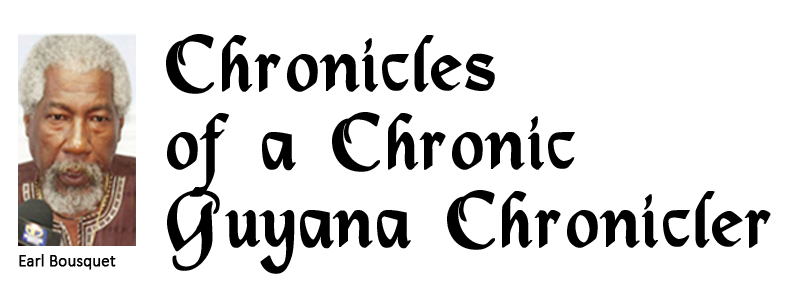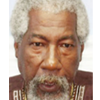Part 1: First Views of Guyana’s First People Have Lasted Forever!
THE biggest book in all my collections in my various libraries is titled, Views of the Interior of Guyana, a larger-than-life, once-in-a-lifetime, first-hand account of the first documented European expeditioners into British Guiana’s interior that produced the first impressions Europeans, as well as inhabitants of the colony’s coastline, got of those who peopled the interior for generations before the Europeans arrived.
Measuring all of 19 X 13 inches, this mountain of a pocketbook of Guyana’s early history is a prize for any collection for both size and contents as well as – and most important – the illustrations contained, which were among the first the outside world saw of Guiana’s large and varied interior.
The massive book was given to my wife Marie and I on September 29, 2014 by Prime Minister Samuel Hinds and his wife Yvonne, who was also Chair of the Guyana Relief Council (GRC), of which I was Vice- Chair while serving in the Guyana media from 1993-1999.
Originally published in 1840 and my copy printed in 2009, this giant of a book offered the first illustrated impressions of what life was like beyond the coastline, in the mountains and rivers, plains and savannahs, forests and jungles, showing what the people who inhabited the interior looked like and the ways their lived, the birds and animals with which they lived, by day and night.
Guyana’s then Minister of Culture, Youth & Sport, Dr Frank Anthony noted in the book’s foreword, that it was one of the most outstanding works of its main author, Sir Robert Herman Schomburgk.
Dr Anthony also noted that back then (169 years earlier): “It was regarded as a technologically advanced work because it combined intaglio, woodblock and innovations in colour lithography…” and that it’s “powerful pictorial representations of the interior rescued Guiana from one of relative obscurity to one of relative importance in the minds of the colonialists.”
Dr Anthony described Schomburgk — a German citizen commissioned by Britain as an explorer, surveyor, cartographer, botanist — for his “meticulous documentation of his scientific findings in various scholarly books and journals,” also describing him as “a man ahead of his time” and an early “global citizen.”
Schomburgk carried out two expeditions to Guiana: the first was between 1835 and 1839, “under the direction of the Geographical Society of London and aided by Her Majesty’s government”; and the second was from 1841 to 1844, when he came as a “Boundaries Commissioner.”
The book, published after Schomburgk’s first trip, included initial sketches by John Morrison; and features 12 carefully-selected views of the massive colony’s wide and deep interior, from Morrison’s sketches later enhanced by Charles Bentley.
Interestingly, the expedition that produced the pictures began just as slavery started to end, during which Schomburgk identified 10 sets of First People, all with distinct linguistic and other communication similarities and differences.
The researcher counted and documented some 7,000 original people scattered across the following ten tribes: Acawais (or Waccawios), Arawaks, Arecunas, Atorais (or Atorias), Caribs (or Caribisi), Macusis, Tarumas, Wapisianas, Warraus and Woyawais.
But – in the untrained European eyes — they all looked the same, even if each had their own established locations and boundaries, coexisting with nature and alongside each other in unimaginable ways.
The mapping expeditions were blessed by Queen Elizabeth and Queen Victoria, respectively; and Schomburgk’s deep personal sense of inquiry, research and documentation led him to spend much time and attention also mapping the ways of life of the original people, tracing their origins and giving the world its first caricatured glimpses, in the 12 selected portraits, of the richness of the flora and fauna, the diversity of different forms of life and the commonality of the way they lived full and simple lives with the best of all nature had to offer.
As with most explorers commissioned by the Kings and Queens of Europe at the time, the expeditions also came seeking new worlds to conquer and Schomburgk openly wished for Guiana’s First People to be Christianised under colonialism, even with (perhaps) a better understanding of and respect for their cultures.
Schomburgk also had a better understanding and appreciation of and respect for the original people he met during his trips, tracing the Essequibo River to its source following the other major rivers through over 3,000 miles in a wide circuit encompassing Brazil and Venezuela; and he drew what was considered the most accurate map of Guiana in those times.
Indeed, Schomburgk’s maps of Guiana were reported (in the informative book) by then Ambassador of the Federal Republic of Germany (FRG) to the Cooperative Republic of Guyana, Dr Ernest Martens, to have “played a major role in helping an international tribunal adjudicate on a border dispute between Great Britain and Venezuela in 1899.”
He also noted that: “In addition to vastly expanding our knowledge of Guyana’s flora and fauna, many species of which he described for the first time, Robert Schomburgk was a champion of the rights of the Amerindian population. Wherever he went in his travels and in his writings he did everything he could to stop slavery expeditions from neighbouring countries and secure a life of peace and happiness for ‘the poor remnants of those who once roved in full supremacy over the soil.’”
He rejected the prevailing narrative that the “Indians,” like others, met across the wider region after Columbus’ arrival in 1492, were lesser mortals, not equal human beings, but savages needing to be civilized.
Schomburgk agreed they should be civilised through European orientation and Christianity, but he also advocated that more should be done to better understand their civilisations (that preceded European arrivals) and to learn from their interactions with nature and synchronized adaptation to their environment.
The 12 portraits highlighted in the book gave the British their first view of what life was like in and who populated Guiana’s interior.




.jpg)










